When the Paris Mosque saved Jews from the Nazis with Muslim IDs
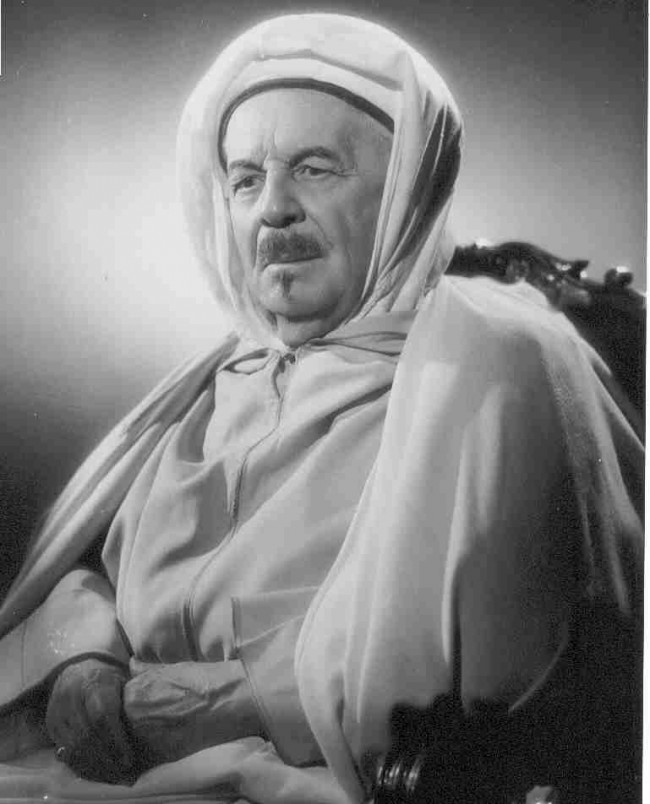
It was during World War 2 when French Jews were being rounded up for murder by Nazis that Si Kaddour Benghabrit, the rector of the Grand Mosque of Paris until 1954, acted.
Benghabrit, an Algerian-born religious and political leader, was audacious and cool. The Jews were hidden in the mosque’s cavern-like cellars. Above them, Benghabrit gave Nazi officers and their wives tours of the mosque.
A North African Jew named Albert Assouline, who had escaped from a German prison camp, wrote about life in the mosque:
“No fewer than 1,732 resistance fighters found refuge in its underground caverns. These included Muslim escapees but also Christians and Jews. The latter were by far the most numerous.”
He had a story to tell:
According to Assouline, he and an Algerian named Yassa Rabah escaped together from the camp and stealthily traversed the countryside across the French-German border, heading for Paris. Once in Paris they made their way to the mosque, where, evidently thanks to Rabah’s connections to the Algerian community, the two found refuge. Eventually Assouline continued his journey and joined up with Free French forces to continue the fight against the German occupation … the most fantastic part of the story was his claim that the mosque provided sanctuary and sustenance to Jews hiding from the Vichy and German troops as well as to other fighters in the anti-Fascist resistance.
In a 1983 article for Almanach due Combattant, a French veterans’ magazine, Assouline wrote [that] the senior imam of the mosque, Si Mohammed Benzouaou took “considerable risk” by hiding Jews and providing many (including many children) with certificates of Muslim identity, with which they could avoid deportation and certain death. Assouline recalled one “hot alert” when German soldiers smelled the odor of cigarettes and, convinced that Muslims were forbidden to smoke, searched the mosque looking for hidden Jews. According to Assouline, the Jews were able to escape via sewer tunnels that connected the mosque to nearby buildings.
Another of the saved was Simon Hilali, a Sephardi Jew given the Arab named Salim. He became a popular Arab-language singer of the time. The subterfuge was elaborate: Benghabrit had the name of Hilali’s made-up Muslim grandfather carved on a headstone in a Parisian Muslim cemetery.
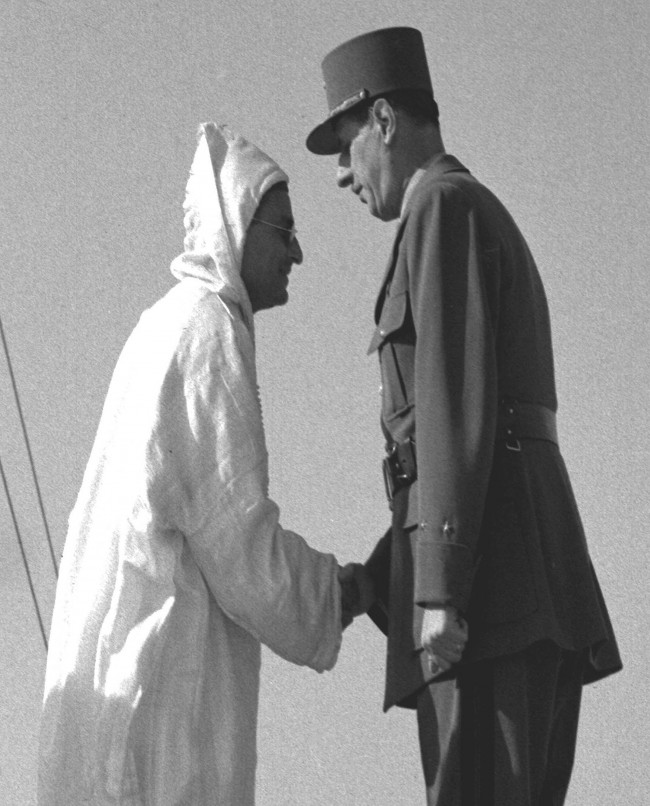
rance’s Gen Charles De Gaulle, right, shakes hands with King Mohammed V, the Sultan of Morocco, at a ceremony at Place de la Concorde, Paris, June 18, 1945, to mark the anniversary of De Gaulle’s first speech of June 18, 1940. De Gaulle and the Sultan took the salute from the French Army as soldiers marched past the reviewing stand. (AP Photo)
Forward explains:
Born Simon Halali in Algeria, the singer was performing in Paris by the late 1930s. The artsy and intellectual Ben Ghabrit was also an amateur violinist and oud player. He frequented high-toned Gallic salons, where he was admired as the “most Parisian of Muslims.” He hired Halali to perform at the Café Maure de la Mosquée, a North African-style coffeehouse and tearoom still located within the Great Mosque in Paris’s 5th Arrondissement.
Ben Ghabrit, although required to collaborate with the Nazi-controlled French Vichy government, was also a close friend of Mohammed V, King of Morocco. The latter monarch’s laudable efforts to protect his Jewish subjects during the Second World War have led to his name, among others, currently being bruited about to be named one of the “Righteous Among the Nations,” an initiative that Shimon Peres reportedly supports. As Eva Weisel pointed out in a December 28 Op-Ed in The New York Times, getting Yad Vashem to grant the honorific to a Muslim seems to be unusually difficult.
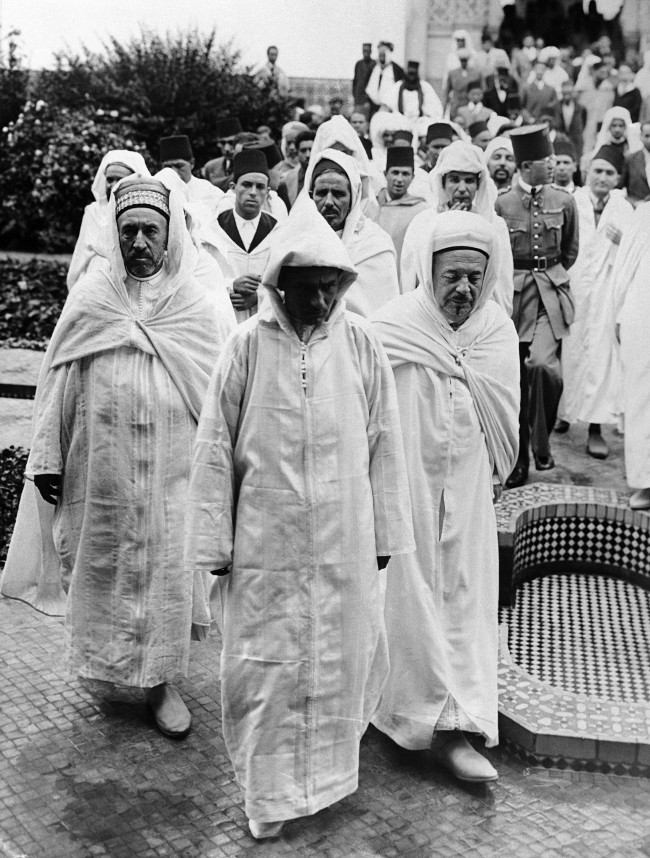
The Sultan of Morocco, Sidi Mohamed, who is on a visit to Paris, attended Friday ritual prayers at the mosque there, accompanied by believers from North Africa. The Sultan of Morocco, centre, leaving the Paris mosque with Si Saddour Ben Ghabri, right, Director of the Franco-Musulman Institute, on July 16, 1937. (AP Photo)
Dalil Boubakeur, the current rector of the Paris mosque and president of the governing body of the Conseil Francais du Culte Musulman speaks out:
“The mosque represented the sensibilities of the Muslims of North Africa toward their Jewish brothers. It was a natural phenomenon. … What happened then (in the 1940s) was very symbolic but exemplary… It is true that the mosque provided certificates of Muslim identity to some Jews. This was possible because, especially for North African Jews, the names are very close… The Germans were always pressing the mosque, trying to impose themselves on the mosque to use it for propaganda among Muslims. They always wanted to have visitors here; at one point, we feared that Hitler himself would make a visit. We tried to resist but it wasn’t always possible…
Boubakeur has a document dated Sept. 24, 1940. It is a note to the French minister of foreign affairs from the deputy director of the ministry’s Political Department. We read:
“The occupation authorities suspect the personnel of the Mosque of Paris of fraudulently delivering to individuals of the Jewish race certificates attesting that the interested persons are of the Muslim confession. The imam was summoned, in a threatening manner, to put an end to all such practices. It seems, in effect, that a number of Jews resorted to all sorts of maneuvers of this kind to conceal their identity.”
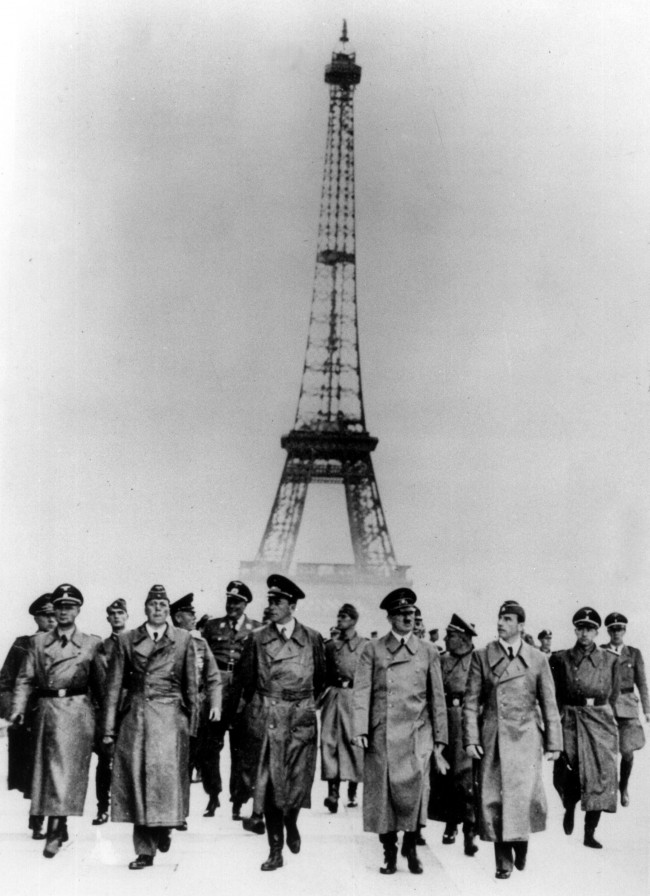
Nazi Party leader Adolf Hitler, front with mustache, is shown with other German officials walking in front of the Eiffel Tower in Paris, France in 1940. The others are not identified. (AP Photo)
Qantata has more:
Another man who took similarly great risks in Paris during the Second World War, was Abdul Hussain Sardari. At the time, he was head of the Iranian Consulate in Paris. He was able to save around 2,000 Iranian Jews then living in France by confusing the Nazis with their own propaganda. As the Nazis regarded the Iranians as Aryans, Sardari claimed that Iranian Jews were, therefore, in principle, also Aryans. Regrettably, Sardari’s brave deeds have since been forgotten not only in Europe, but also in the Islamic Republic of Iran.
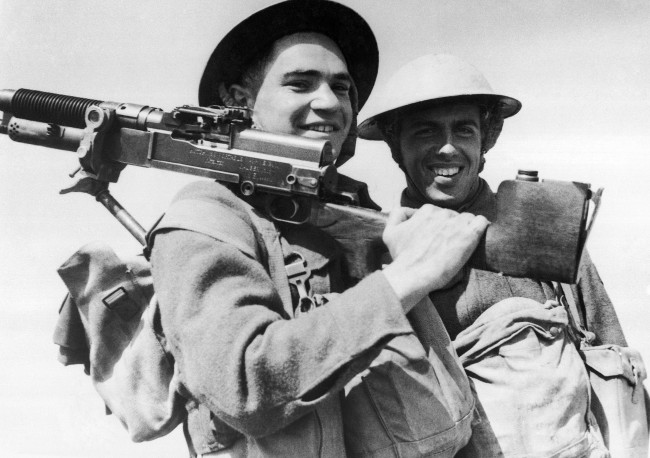
housands of Jews forced by Nazi persecution to refuge in Palestine have enlisted from Poland, Rumania, Czechoslovakia, Greece, Bulgaria, Palestine, Hungary and Germany, including doctors, solicitors and university students, many having already seen service in France, Greece, Crete, and Libya. A unit now in Cyprus has defense positions in a crusader castle. Members of the Jewish Foreign Legion May 6, 1941. (AP Photo)
The story of the Arabs who saved the Jews is covered by Robert Satloff in his book Among the Righteous. He writes:
“In the eyes of many Arabs, the catastrophe of Israel’s founding would not have occurred if the catastrophe of the Holocaust had not occurred first; accepting the uniqueness and enormity of the latter therefore runs the risk of accepting the validity and legitimacy of the former. As an historian, it is important to recognize the critical role that the Holocaust did play in the founding of Israel … For most Arabs I have met, that history muddies the image of European colonialists paying with Arab land to atone for their guilt over the fate of the Jews during World War II. To them, the creation of Israel was the world’s indulgence to Jews as compensation for the destruction of the Holocaust … I decided that the most useful response I could offer to 9/11 was to combat Arab ignorance of the Holocaust … I needed to make the Holocaust accessible to Arabs; I needed to make the Holocaust an Arab story…
“The answer came to me one autumn evening in 2001. ‘Whoever saves one life, saves the entire world,’ says the Qur’an, an echo of the Talmud’s injunction, ‘If you save one life, it’s as if you have saved the world.’ If I could tell the story of a single Arab who saved a single Jew during the Holocaust, then perhaps I could make the Arabs see the Holocaust as a source of pride, worthy of remembering, not just something to avoid or deny. It was, I thought, the most positive solution I could imagine … This is the most hopeful story I have ever told. Recapturing these lost stories from the Holocaust’s long reach into Arab lands offers people of goodwill among each community — Arab and Jewish — a way to look through the lens of the most powerful narratives in history and see each other differently.”
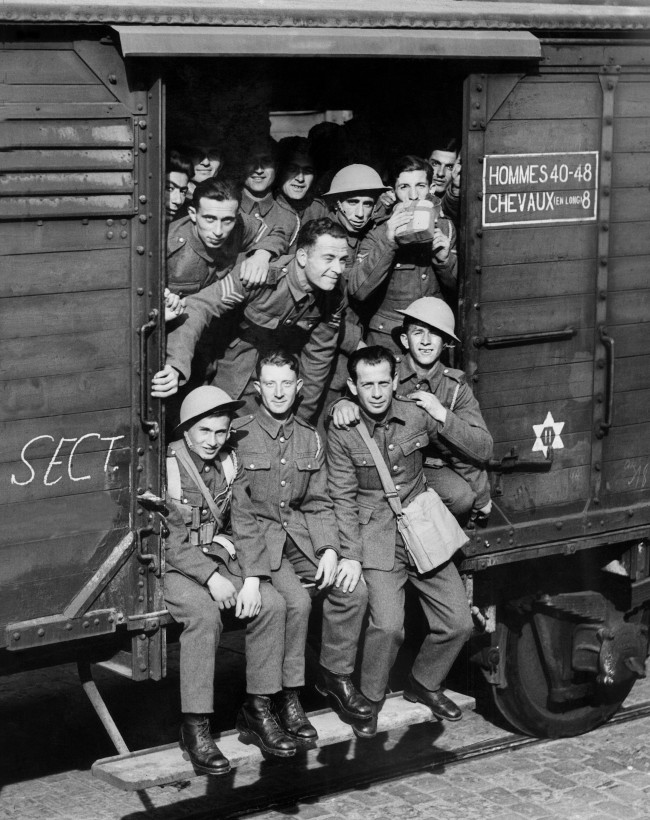
Humanity wins:
“At every stage of the Nazi, Vichy, and Fascist persecution of Jews in Arab lands, and in every place that it occurred, Arabs helped Jews. Some Arabs spoke out against the persecution of Jews and took public stands of unity with them. Some Arabs denied the support and assistance that would have made the wheels of the anti-Jewish campaign spin more efficiently. Some Arabs shared the fate of Jews and, through that experience, forged a unique bond of comradeship. And there were occasions when certain Arabs chose to do more than just offer moral support to Jews. They bravely saved Jewish lives, at times risking their own in the process. Those Arabs were true heroes.”
Satloff writes”
“I was escorted around the city’s Jewish landmarks [in Tunis] by an engaging professor named Andre Abitbol. As we walked the streets, he told a captivating tale of one of his wife’s relatives, a well-to-do man named Albert Bessis, who evidently passed much of the German occupation hiding in the cellar of an imposing townhouse at one of the city’s most fashionable addresses, 19 Avenue de Paris. German officers had requisitioned the residence, one of the city’s finest, and were living just upstairs. Every day, said Abitbol, an Arab chauffeur — a man remembered only as Kaddour — brought messages, packages and mail to the Germans above and took the opportunity to deliver a parcel of food to Albert below. Thanks to Kaddour, Albert survived the German occupation.”
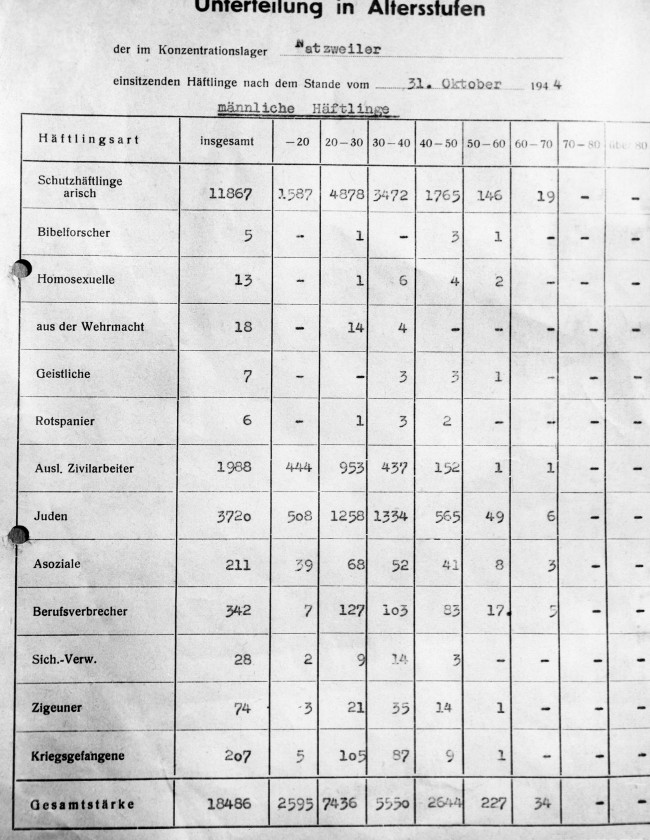
German ledger found in the Natzviller Concentration Camp at Struthof Concentration Camp in Natzviller area, France on Dec. 1, 1944. The ledger subdivides male prisoners by age group and the following types; 1, Aryan; 2, professors; 3, homosexuals; 4, soldiers; 5, priests; 6, Spaniards; 7, foreign civil workers; 8, Jews; 9, socialists; 10, criminals; 11, anarchists; 12, gypsies; 13, prisoners of war. (AP Photo)
Mirella Hassan, a Tunisian Jew recalls:
“When I was a little girl, my parents told me often of the difficulties they had to survive in this period, and above all of the help they received from their Muslim neighbors — for food, for milk — because I had two sisters at a very young age. They (eventually) died during the war, of malnutrition. My father used to go look for goat’s milk, at night during the bombardments, at the (home of local) shepherds. Mother also was nursing. A Muslim wet-nurse came to help nurse my sisters. That’s all I remember. I don’t recall her name, but this help given by these Tunisian Muslims, in their own way, what they could, a gesture often made with selfless friendship, which enabled the saving of many lives … That is my humble testimony.”
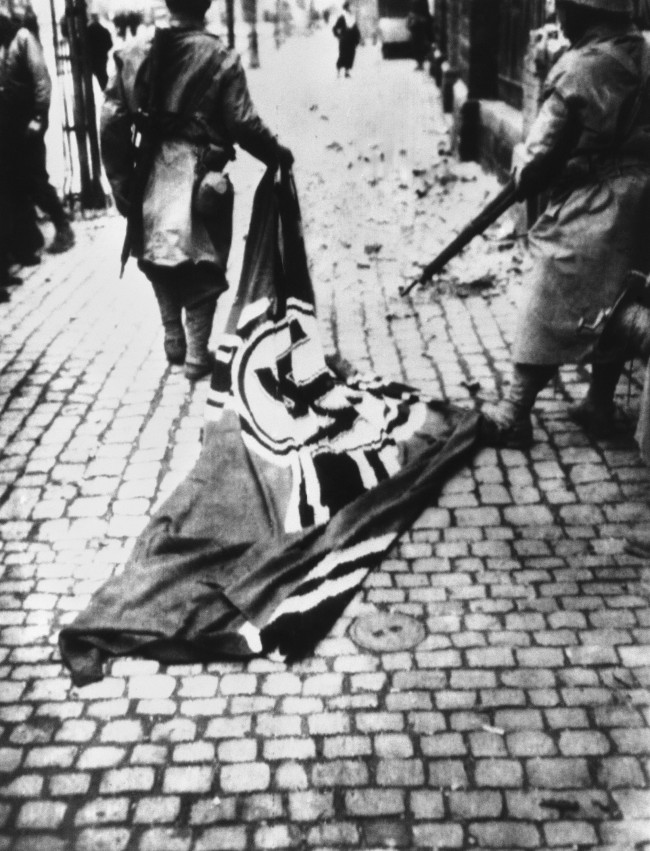
A Moroccan soldier drags behind him a Nazi standard, on a sidewalk in the city of Mulhouse, taken from the Germans in the Belfort sector of France on Nov. 22, 1944. (AP Photo)
Si Ali Sakkat should not be forgotten:
Another rescue story that had been completely lost is that of Si Ali Sakkat, a Tunisian nobleman and the heir to an ancient liberal family. At a certain point in the war in Tunisia, with bombs falling all around them, some sixty Jewish workers managed to escape from a forced labour camp. Looking for shelter, the group turned up at the gates of Si Ali’s farm. This man, who had also held ministerial posts in the government of his country, had no hesitation in welcoming all the fugitives into his home, feeding them and keeping them safe until the Allied victory.
Never forget. Don’t give into censors, bigots and people who have only read one book.
Humanity always wins out…
Posted: 19th, January 2015 | In: Key Posts, Reviews Comments (2) | TrackBack | Permalink


